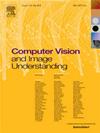利用注意力和隐写术进行隐形后门攻击
IF 4.3
3区 计算机科学
Q2 COMPUTER SCIENCE, ARTIFICIAL INTELLIGENCE
引用次数: 0
摘要
最近,随着深度神经网络(DNN)的发展和广泛应用,后门攻击给 DNN 的训练过程带来了新的安全威胁。对神经网络的后门攻击通过植入隐藏的、未经授权的触发器来破坏 DNN 的安全性和可信度,在干净的样本上导致良性行为,而在包含后门触发器的样本上则表现出恶意行为。现有的后门攻击通常采用与样本无关的触发器,而且每个样本的触发器都是相同的,这导致中毒图像缺乏自然感,对现有的后门防御无效。为了解决这些问题,本文提出了一种新颖的隐形后门攻击,其中的后门触发器是动态的,且针对每个样本。具体来说,我们利用图像上的空间注意力和预先训练的模型来获取动态触发器,然后使用编码器-解码器网络注入这些触发器。注入网络的设计得益于隐写术研究的最新进展。为了证明所提出的隐写术网络的有效性,我们设计了两种后门攻击模式,分别命名为 ASBA 和 ATBA,其中 ASBA 利用隐写术网络进行攻击,而 ATBA 是一种不使用隐写术的后门攻击。随后,我们使用四个标准数据集对深度神经网络(DNN)进行了攻击。我们的大量实验表明,ASBA 在隐蔽性和对当前防御措施的恢复能力方面都超过了 ATBA。此外,ASBA 和 ATBA 都表现出了卓越的攻击效率。本文章由计算机程序翻译,如有差异,请以英文原文为准。

Invisible backdoor attack with attention and steganography
Recently, with the development and widespread application of deep neural networks (DNNs), backdoor attacks have posed new security threats to the training process of DNNs. Backdoor attacks on neural networks undermine the security and trustworthiness of DNNs by implanting hidden, unauthorized triggers, leading to benign behavior on clean samples while exhibiting malicious behavior on samples containing backdoor triggers. Existing backdoor attacks typically employ triggers that are sample-agnostic and identical for each sample, resulting in poisoned images that lack naturalness and are ineffective against existing backdoor defenses. To address these issues, this paper proposes a novel stealthy backdoor attack, where the backdoor trigger is dynamic and specific to each sample. Specifically, we leverage spatial attention on images and pre-trained models to obtain dynamic triggers, which are then injected using an encoder–decoder network. The design of the injection network benefits from recent advances in steganography research. To demonstrate the effectiveness of the proposed steganographic network, we design two backdoor attack modes named ASBA and ATBA, where ASBA utilizes the steganographic network for attack, while ATBA is a backdoor attack without steganography. Subsequently, we conducted attacks on Deep Neural Networks (DNNs) using four standard datasets. Our extensive experiments show that ASBA surpasses ATBA in terms of stealthiness and resilience against current defensive measures. Furthermore, both ASBA and ATBA demonstrate superior attack efficiency.
求助全文
通过发布文献求助,成功后即可免费获取论文全文。
去求助
来源期刊

Computer Vision and Image Understanding
工程技术-工程:电子与电气
CiteScore
7.80
自引率
4.40%
发文量
112
审稿时长
79 days
期刊介绍:
The central focus of this journal is the computer analysis of pictorial information. Computer Vision and Image Understanding publishes papers covering all aspects of image analysis from the low-level, iconic processes of early vision to the high-level, symbolic processes of recognition and interpretation. A wide range of topics in the image understanding area is covered, including papers offering insights that differ from predominant views.
Research Areas Include:
• Theory
• Early vision
• Data structures and representations
• Shape
• Range
• Motion
• Matching and recognition
• Architecture and languages
• Vision systems
 求助内容:
求助内容: 应助结果提醒方式:
应助结果提醒方式:


